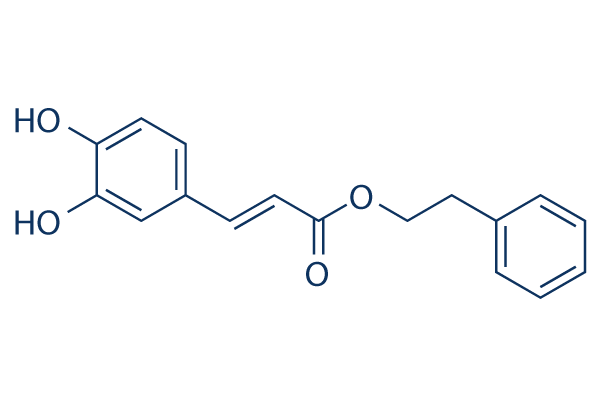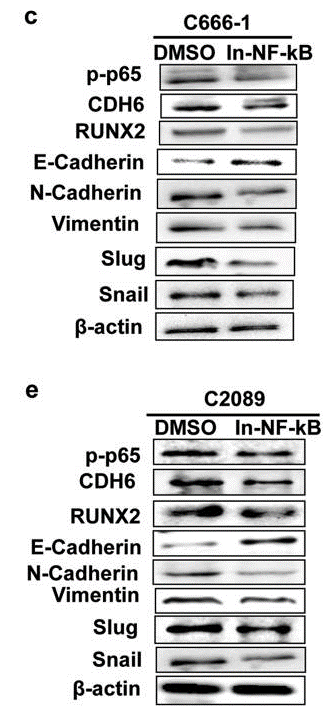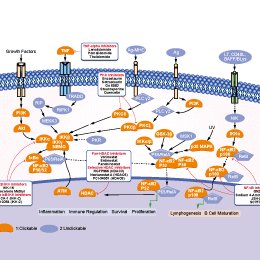
- Bioactive Compounds
- By Signaling Pathways
- PI3K/Akt/mTOR
- Epigenetics
- Methylation
- Immunology & Inflammation
- Protein Tyrosine Kinase
- Angiogenesis
- Apoptosis
- Autophagy
- ER stress & UPR
- JAK/STAT
- MAPK
- Cytoskeletal Signaling
- Cell Cycle
- TGF-beta/Smad
- DNA Damage/DNA Repair
- Compound Libraries
- Popular Compound Libraries
- Customize Library
- Clinical and FDA-approved Related
- Bioactive Compound Libraries
- Inhibitor Related
- Natural Product Related
- Metabolism Related
- Cell Death Related
- By Signaling Pathway
- By Disease
- Anti-infection and Antiviral Related
- Neuronal and Immunology Related
- Fragment and Covalent Related
- FDA-approved Drug Library
- FDA-approved & Passed Phase I Drug Library
- Preclinical/Clinical Compound Library
- Bioactive Compound Library-I
- Bioactive Compound Library-Ⅱ
- Kinase Inhibitor Library
- Express-Pick Library
- Natural Product Library
- Human Endogenous Metabolite Compound Library
- Alkaloid Compound LibraryNew
- Angiogenesis Related compound Library
- Anti-Aging Compound Library
- Anti-alzheimer Disease Compound Library
- Antibiotics compound Library
- Anti-cancer Compound Library
- Anti-cancer Compound Library-Ⅱ
- Anti-cancer Metabolism Compound Library
- Anti-Cardiovascular Disease Compound Library
- Anti-diabetic Compound Library
- Anti-infection Compound Library
- Antioxidant Compound Library
- Anti-parasitic Compound Library
- Antiviral Compound Library
- Apoptosis Compound Library
- Autophagy Compound Library
- Calcium Channel Blocker LibraryNew
- Cambridge Cancer Compound Library
- Carbohydrate Metabolism Compound LibraryNew
- Cell Cycle compound library
- CNS-Penetrant Compound Library
- Covalent Inhibitor Library
- Cytokine Inhibitor LibraryNew
- Cytoskeletal Signaling Pathway Compound Library
- DNA Damage/DNA Repair compound Library
- Drug-like Compound Library
- Endoplasmic Reticulum Stress Compound Library
- Epigenetics Compound Library
- Exosome Secretion Related Compound LibraryNew
- FDA-approved Anticancer Drug LibraryNew
- Ferroptosis Compound Library
- Flavonoid Compound Library
- Fragment Library
- Glutamine Metabolism Compound Library
- Glycolysis Compound Library
- GPCR Compound Library
- Gut Microbial Metabolite Library
- HIF-1 Signaling Pathway Compound Library
- Highly Selective Inhibitor Library
- Histone modification compound library
- HTS Library for Drug Discovery
- Human Hormone Related Compound LibraryNew
- Human Transcription Factor Compound LibraryNew
- Immunology/Inflammation Compound Library
- Inhibitor Library
- Ion Channel Ligand Library
- JAK/STAT compound library
- Lipid Metabolism Compound LibraryNew
- Macrocyclic Compound Library
- MAPK Inhibitor Library
- Medicine Food Homology Compound Library
- Metabolism Compound Library
- Methylation Compound Library
- Mouse Metabolite Compound LibraryNew
- Natural Organic Compound Library
- Neuronal Signaling Compound Library
- NF-κB Signaling Compound Library
- Nucleoside Analogue Library
- Obesity Compound Library
- Oxidative Stress Compound LibraryNew
- Plant Extract Library
- Phenotypic Screening Library
- PI3K/Akt Inhibitor Library
- Protease Inhibitor Library
- Protein-protein Interaction Inhibitor Library
- Pyroptosis Compound Library
- Small Molecule Immuno-Oncology Compound Library
- Mitochondria-Targeted Compound LibraryNew
- Stem Cell Differentiation Compound LibraryNew
- Stem Cell Signaling Compound Library
- Natural Phenol Compound LibraryNew
- Natural Terpenoid Compound LibraryNew
- TGF-beta/Smad compound library
- Traditional Chinese Medicine Library
- Tyrosine Kinase Inhibitor Library
- Ubiquitination Compound Library
-
Cherry Picking
You can personalize your library with chemicals from within Selleck's inventory. Build the right library for your research endeavors by choosing from compounds in all of our available libraries.
Please contact us at [email protected] to customize your library.
You could select:
- Antibodies
- Bioreagents
- qPCR
- 2x SYBR Green qPCR Master Mix
- 2x SYBR Green qPCR Master Mix(Low ROX)
- 2x SYBR Green qPCR Master Mix(High ROX)
- Protein Assay
- Protein A/G Magnetic Beads for IP
- Anti-Flag magnetic beads
- Anti-Flag Affinity Gel
- Anti-Myc magnetic beads
- Anti-HA magnetic beads
- Magnetic Separator
- Poly DYKDDDDK Tag Peptide lyophilized powder
- Protease Inhibitor Cocktail
- Protease Inhibitor Cocktail (EDTA-Free, 100X in DMSO)
- Phosphatase Inhibitor Cocktail (2 Tubes, 100X)
- Cell Biology
- Cell Counting Kit-8 (CCK-8)
- Animal Experiment
- Mouse Direct PCR Kit (For Genotyping)
- New Products
- Contact Us
Caffeic Acid Phenethyl Ester
Synonyms: CAPE, Phenylethyl Caffeate
Caffeic acid phenethyl ester (CAPE, Phenylethyl Caffeate) is a potent and specific inhibitor of NF-κB activation, and also displays antioxidant, immunomodulatory and antiinflammatory activities.

Caffeic Acid Phenethyl Ester Chemical Structure
CAS No. 104594-70-9
Purity & Quality Control
Batch:
Purity:
99.99%
99.99
Caffeic Acid Phenethyl Ester Related Products
Signaling Pathway
Cell Data
| Cell Lines | Assay Type | Concentration | Incubation Time | Formulation | Activity Description | PMID |
|---|---|---|---|---|---|---|
| mouse RAW264.7 cells | Function assay | 24 h | Inhibition of LPS-induced nitric oxide production in mouse RAW264.7 cells assessed as nitrite accumulation administered 1 hr before LPS challenge and measured after 24 hrs by Griess reagent assay, EC50=0.193 μM | 18667320 | ||
| mouse 26-L5 cells | Proliferation assay | 72 h | Antiproliferative activity against mouse 26-L5 cells after 72 hrs by MTT assay, EC50=0.3 μM | 12027739 | ||
| human HeLa cells | Proliferation assay | 72 h | Antiproliferative activity against human HeLa cells after 72 hrs by MTT assay, EC50=2.36 μM | 12027739 | ||
| human Bewo cells | Function assay | Antitumor activity against human Bewo cells assessed as inhibition of cell growth by MTT assay, IC50=2.96 μM | 25160837 | |||
| mouse J774.1 cells | Function assay | 24 h | Inhibition of LPS-induced NO production in mouse J774.1 cells after 24 hrs by Griess reagent assay, IC50=4.8 μM | 15974608 | ||
| human Bel7402 cells | Cytotoxic assay | Cytotoxicity against human Bel7402 cells by MTT assay, IC50=5.5 μM | 18952420 | |||
| human LNCAP cells | Function assay | 24 h | Antiandrogenic activity in human LNCAP cells assessed as reduction in DHT-stimulated PSA release after 24 hrs by ELISA, IC50=6.2 nM | 24080105 | ||
| mouse BV2 cells | Function assay | 24 h | Inhibition of nitric oxide production in LPS-stimulated mouse BV2 cells treated 3 hrs before LPS addition measured after 24 hrs by Griess assay, IC50=6.4 μM | 23870700 | ||
| mouse B16-BL6 cells | Proliferation assay | 72 h | Antiproliferative activity against mouse B16-BL6 cells after 72 hrs by MTT assay, EC50=6.79 μM | 12027739 | ||
| HUVEC cells | Cytotoxic assay | 18 h | Cytoprotective activity against H2O2-induced oxidative stress in HUVEC cells after 18 hrs by Cell-Titer Blue assay | 20598894 | ||
| human HT1080 cells | Proliferation assay | 72 h | Antiproliferative activity against human HT1080 cells after 72 hrs by MTT assay, EC50=9.5 μM | 12027739 | ||
| human HL60 cells | Cytotoxic assay | 72 h | Cytotoxicity against human HL60 cells after 72 hrs by MTT assay, IC50=9.8 μM | 20673727 | ||
| human LS 174T cells | Cytotoxic assay | 72 h | Cytotoxicity against human LS 174T cells after 72 hrs by MTT assay, IC60=9.9 μM | 20673727 | ||
| human SGC7901 cells | Function assay | Antitumor activity against human SGC7901 cells assessed as inhibition of cell growth by MTT assay, IC50=14.26 μM | 25160837 | |||
| human Bel7404 cells | Cytotoxic assay | 72 h | Cytotoxicity against human Bel7404 cells after 72 hrs by MTT assay, IC50=14.5 μM | 20673727 | ||
| human BGC823 cells | Cytotoxic assay | 72 h | Cytotoxicity against human BGC823 cells after 72 hrs by MTT assay, IC50=19.3 μM | 20673727 | ||
| human HO8910 cells | Cytotoxic assay | 72 h | Cytotoxicity against human HO8910 cells after 72 hrs by MTT assay, IC50=25.5 μM | 20673727 | ||
| human MCF7 cells | Cytotoxic assay | Cytotoxicity against human MCF7 cells by MTT assay, IC50=26.7 μM | 18952420 | |||
| human A549 cells | Cytotoxic assay | 72 h | Cytotoxicity against human A549 cells after 72 hrs by MTT assay, IC50=26.8 μM | 20673727 | ||
| human LNCAP cells | Cytotoxic assay | 24 h | Cytotoxicity against human LNCAP cells assessed as reduction in cell viability after 24 hrs by WST-1 assay, IC50=33.7 μM | 24080105 | ||
| human HeLa cells | Function assay | Antitumor activity against human HeLa cells assessed as inhibition of cell growth by MTT assay, IC50=37.98 μM | 25160837 | |||
| human HepG2 cells | Function assay | Antitumor activity against human HepG2 cells assessed as inhibition of cell growth by MTT assay, IC50=40.87 μM | 25160837 | |||
| human ECA109 cells | Cytotoxic assay | 72 h | Cytotoxicity against human ECA109 cells after 72 hrs by MTT assay, IC50=42.6 μM | 20673727 | ||
| human BCG823 cells | Cytotoxic assay | Cytotoxicity against human BCG823 cells by MTT assay, IC50=44.6 μM | 18952420 | |||
| human KB cells | Cytotoxic assay | 72 h | Cytotoxicity against human KB cells after 72 hrs by MTT assay, IC50=45.2 μM | 20673727 | ||
| human K562 cells | Cytotoxic assay | 72 h | Cytotoxicity against human K562 cells after 72 hrs by MTT assay, IC50=46 μM | 20673727 | ||
| rat VSMC | Function assay | 5 μM | 30 mins | Decrease in intracellular ROS level in PDGF-stimulated rat VSMC at 5 uM pretreated with compound for 30 mins measured after up to 23 hrs of post stimulation using H2DCF by flow cytometric analysis | 21265554 | |
| rat PC12 cells | Function assay | 2.5 μM | 3 h | Neuroprotective activity against H2O2-induced damage in rat PC12 cells assessed as cell viability at 2.5 uM preincubated for 3 hrs followed by H2O2 challenge measured after 5 hrs by MTT assay | 24697335 | |
| Click to View More Cell Line Experimental Data | ||||||
Biological Activity
| Description | Caffeic acid phenethyl ester (CAPE, Phenylethyl Caffeate) is a potent and specific inhibitor of NF-κB activation, and also displays antioxidant, immunomodulatory and antiinflammatory activities. | |
|---|---|---|
| Targets |
|
| In vitro | ||||
| In vitro | Caffeic acid phenethyl ester blocks NF-κB activation induced by phorbol ester, ceramide, okadaic acid, and hydrogen peroxide by preventing the translocation of the p65 subunit of NF-κB to the nucleus. [1] In a series of tumor cell lines, Caffeic acid phenethyl ester shows promising antiproliferative activity with EC50 of 1.76, 3.16, 13.7, and 44.0 μM against murine colon 26-L5, murine B16-BL6 melanoma, human HT-1080 fibrosarcoma and human lung A549 adenocarcinoma cell lines, respectively. [2] Caffeic acid phenethyl ester, as a potent antioxidant, exerts its anti-apoptotic effect in cerebellar granule cells by blocking ROS formation and inhibiting caspase activity. [3] Moreover, Caffeic acid phenethyl ester attenuates the pro-inflammatory phenotype of LPS-stimulated HSCs, and LPS-induced sensitization of HSCs to fibrogenic cytokines by inhibiting NF-κB signaling. [4] | |||
|---|---|---|---|---|
| Cell Research | Cell lines | Murine colon 26-L5, murine B16-BL6 melanoma, human HT-1080 fibrosarcoma and human lung A549 adenocarcinoma cell lines | ||
| Concentrations | ~200 μM | |||
| Incubation Time | 3 days | |||
| Method | Human HT-1080 fibrosarcoma, human lung A549 adenocarcinoma and murine B16-BL6 melanoma cell lines are maintained in EMEM medium supplemented with 10% FCS, 0.1% sodium bicarbonate and 2 mM glutamine. Murine colon 26-L5 carcinoma cell line, on the other hand, is maintained in RPMI medium containing the same supplements as in EMEM. These are all highly metastatic cell lines except for A-549 carcinoma. Cellular viability is determined using the standard MTT assay. In brief, exponentially growing cells are harvested and 100 μl of cell suspension containing 2000 cells is plated in 96-well microtiter plates. After 24 h of incubation to allow for cell attachment, the cells are treated with varying concentrations of test samples in medium (100 μl) and incubated for 72 h at 37°C under 5% CO2. Three hours after the addition of MTT, the amount of formazan formed is measured spectrophotometrically at 550 nm with a Perkin Elmer HTS-7000 plate reader. The test samples are first dissolved in DMSO and then diluted with medium; the final concentration of DMSO is less than 0.25%. Normal also had the same extent of DMSO. 5-Fluorouracil (5-FU) and doxorubicin HCl are used as positive controls, and EC50 values are calculated from the mean values of data from 4 wells. |
|||
| Experimental Result Images | Methods | Biomarkers | Images | PMID |
| Western blot | p-p65 / CDH6 / RUNX2 / E-cadherin / N-cadherin / Vimentin / Slug / Snail Nrf2 AKT / AKT1 / AKT2 / AKT3 / p-AKT / FOXO1 / FOXO3a / p-FOXO1 / p-FOXO3a / Skp2 / p27(Kip) / Cyclin D1 / Rb / p-Rb |

|
29284791 | |
| Immunofluorescence | NF-κB |

|
29284791 | |
| Growth inhibition assay | Cell number |

|
23615471 | |
| In Vivo | ||
| In vivo | In vivo, Caffeic acid phenethyl ester (10 mg/kg, i.p.) inhibits the growth and angiogenesis of primary tumors in C57BL/6 and BALB/c mice inoculated with Lewis lung carcinoma, colon carcinoma, and melanoma cells. [5] Caffeic acid phenethyl ester (5, 10, 20 mg/kg) also shows immunomodulatory effects in vivo by decreasing thymus weight and/or cellularity of thymus and spleen. [6] | |
|---|---|---|
| Animal Research | Animal Models | C57BL/6 and BALB/c mice inoculated with Lewis lung carcinoma, colon carcinoma, and melanoma cells |
| Dosages | ~10 mg/kg | |
| Administration | i.p. | |
| NCT Number | Recruitment | Conditions | Sponsor/Collaborators | Start Date | Phases |
|---|---|---|---|---|---|
| NCT05726708 | Recruiting | Autism Spectrum Disorder |
Centre Hospitalier Universitaire Vaudois |
October 24 2023 | Not Applicable |
| NCT05934019 | Recruiting | Mental Health Issue|Transdiagnostic Mechanisms|Adolescent Psychology|Prevention|Online Intervention|Psychological Intervention|Mental Disorder in Adolescence Subclinical |
University of Bern |
June 9 2023 | Not Applicable |
Chemical Information & Solubility
| Molecular Weight | 284.31 | Formula | C17H16O4 |
| CAS No. | 104594-70-9 | SDF | Download Caffeic Acid Phenethyl Ester SDF |
| Smiles | C1=CC=C(C=C1)CCOC(=O)C=CC2=CC(=C(C=C2)O)O | ||
| Storage (From the date of receipt) | |||
|
In vitro |
DMSO : 56 mg/mL ( (196.96 mM) Moisture-absorbing DMSO reduces solubility. Please use fresh DMSO.) Ethanol : 56 mg/mL Water : Insoluble |
Molecular Weight Calculator |
|
In vivo Add solvents to the product individually and in order. |
In vivo Formulation Calculator |
||||
Preparing Stock Solutions
Molarity Calculator
In vivo Formulation Calculator (Clear solution)
Step 1: Enter information below (Recommended: An additional animal making an allowance for loss during the experiment)
mg/kg
g
μL
Step 2: Enter the in vivo formulation (This is only the calculator, not formulation. Please contact us first if there is no in vivo formulation at the solubility Section.)
% DMSO
%
% Tween 80
% ddH2O
%DMSO
%
Calculation results:
Working concentration: mg/ml;
Method for preparing DMSO master liquid: mg drug pre-dissolved in μL DMSO ( Master liquid concentration mg/mL, Please contact us first if the concentration exceeds the DMSO solubility of the batch of drug. )
Method for preparing in vivo formulation: Take μL DMSO master liquid, next addμL PEG300, mix and clarify, next addμL Tween 80, mix and clarify, next add μL ddH2O, mix and clarify.
Method for preparing in vivo formulation: Take μL DMSO master liquid, next add μL Corn oil, mix and clarify.
Note: 1. Please make sure the liquid is clear before adding the next solvent.
2. Be sure to add the solvent(s) in order. You must ensure that the solution obtained, in the previous addition, is a clear solution before proceeding to add the next solvent. Physical methods such
as vortex, ultrasound or hot water bath can be used to aid dissolving.
Tech Support
Answers to questions you may have can be found in the inhibitor handling instructions. Topics include how to prepare stock solutions, how to store inhibitors, and issues that need special attention for cell-based assays and animal experiments.
Tel: +1-832-582-8158 Ext:3
If you have any other enquiries, please leave a message.
* Indicates a Required Field
Tags: buy Caffeic Acid Phenethyl Ester | Caffeic Acid Phenethyl Ester supplier | purchase Caffeic Acid Phenethyl Ester | Caffeic Acid Phenethyl Ester cost | Caffeic Acid Phenethyl Ester manufacturer | order Caffeic Acid Phenethyl Ester | Caffeic Acid Phenethyl Ester distributor







































